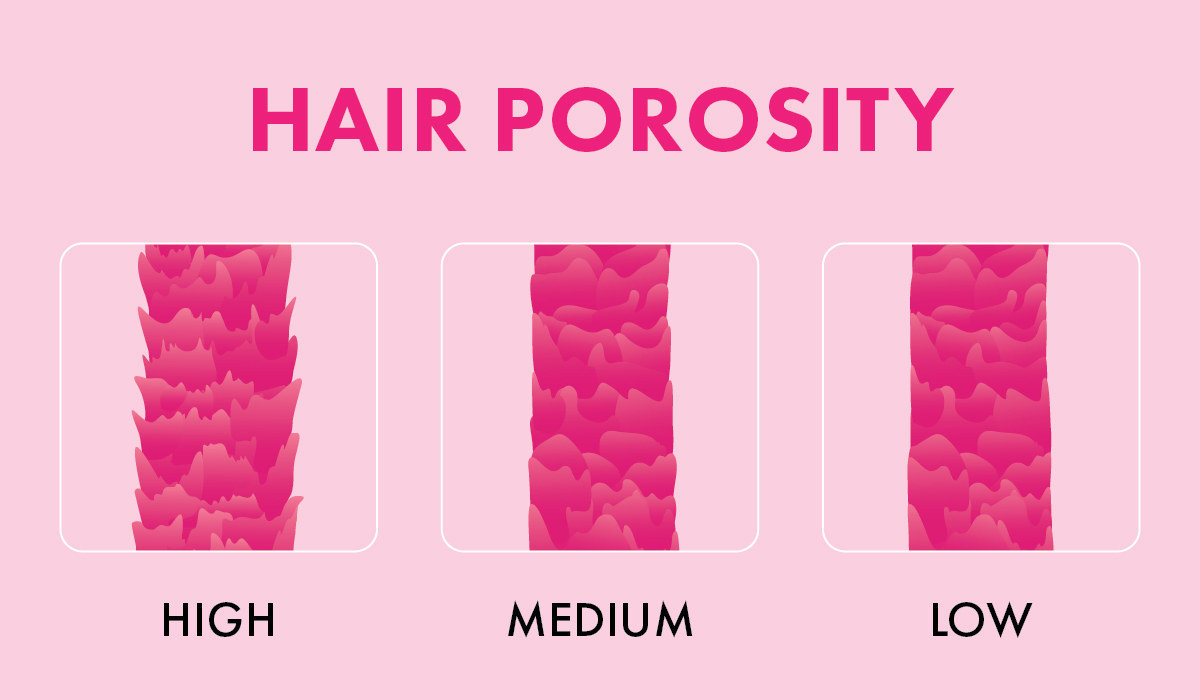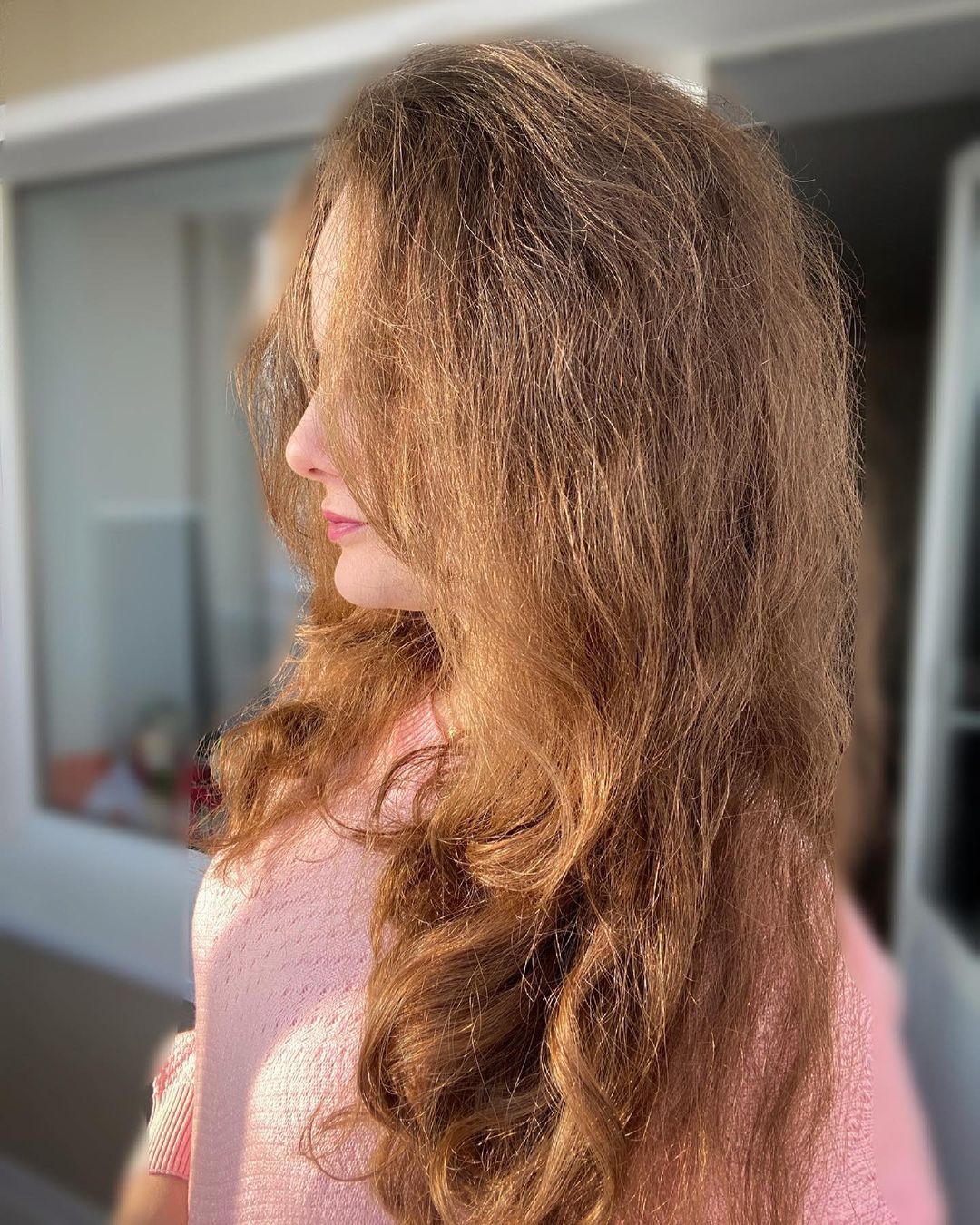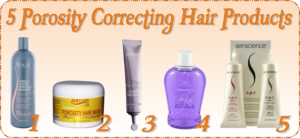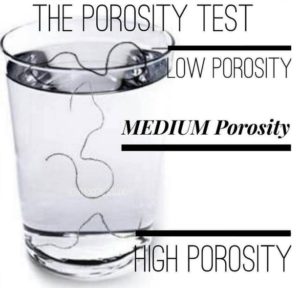Everything You Need To Know About Hair Porosity
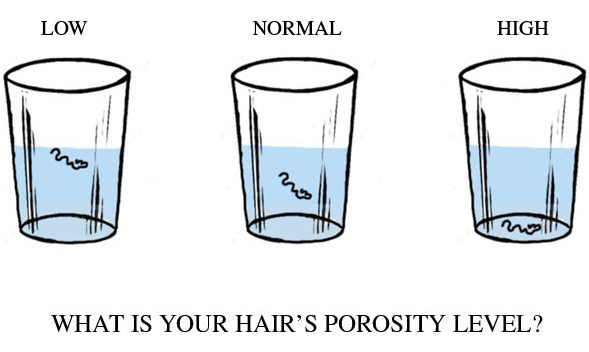
Porosity was one of those terms I’d heard floating around the natural hair community that I never took the time to research.
If you’re like me, you may have seen it too but weren’t too familiar with what it actually meant. It’s more common for people to regard hair typing as the best way to determine how to care for their hair but porosity shines a different light because it has to do with the condition of the strands themselves. By knowing your hair porosity, it’s easier to know how to care for your hair the right way.
So what is porosity?
Hair porosity is the hair’s ability to absorb and hold moisture. There are two ways to test hair porosity:
1. Pull a few pieces of hair from a comb/brush and place into a bowl of water (this is MUCH easier than trying to rip out a few strands).
Let it sit for 2-4 minutes. If the hair is floating at the top that means that you have low porosity hair. If the hair sits in the middle you have medium porosity hair (also known as normal porosity hair); if it sinks to the bottom you have high porosity hair.
2. The second method is the strand test. Take a single strand of hair with your fingers and slide your finger up the shaft. If you feel little bumps then it means your cuticle is lifted and you have high porosity hair. If the shaft is smooth that means you have low porosity hair.
I did this impromptu scientific experiment sitting in my bedroom with my best friend. We dropped a few strands of our hair into a small bowl of water and watched it sit for a few minutes. I found out that I had high porosity hair. She, on the other hand had low porosity hair (her hair type is also about 3a, 3b). Her individual strands are thicker and stronger than mine.
…So why do you care, and what exactly does all of this mean?
Low Porosity Hair is hair that doesn’t really allow water and moisture in (that’s why it stayed at the top of the water during the water test).
It means there is a tightly bound cuticle layer with overlapping scales and it lays flat. Low porosity hair is usually shiny, repels moisture, and is hard to process with chemicals. It can also accumulate build up from protein deep conditioners, which leaves it feeling like stiff straw.
Humectants like glycerin and honey*, and emollients like Shea butter*, coconut* and jojoba* oils* are good for this hair porosity. Also opt for more liquid based products instead of very thick ones.
 Try to avoid thick oils*, and other heavy products, because these will seal the cuticle and further block moisture from getting in so the hair can be.moisturized. To help your hair really get some moisture, you might want to invest in a hair steamer*. Work on wet styling as opposed to dry, to make products penetrate the hair shaft easier.
Try to avoid thick oils*, and other heavy products, because these will seal the cuticle and further block moisture from getting in so the hair can be.moisturized. To help your hair really get some moisture, you might want to invest in a hair steamer*. Work on wet styling as opposed to dry, to make products penetrate the hair shaft easier.
Medium Porosity Hair requires the least maintenance, and has a more relaxed cuticle layer. It can hold styles well, and it can be really shiny and healthy. It can also be colored and treated with predictable results, but after time it can increase porosity.
Because of this, it’s important to not chemically treat normal porosity hair too often. Medium porosity hair only requires an occasional protein treatment. By maintaining a good hair regimen, and limiting heat/ chemical use, hair will remain healthy without a lot of work.
High Porosity Hair can be either a result of genetics or damage. High porosity hair has gaps and holes in the cuticle, causing it to absorb too much moisture.
This causes frizz and tangling in humid weather. It also lets out moisture, leaving the hair dry. Leave in conditioners, moisturizers, and sealers help hold the moisture in the hair. It’s also good to use heavy hair butters* to fill gaps in damaged cuticles. Shea butter* is a good example of a heavy butter.
To keep the moisture in your hair, opt for the LOC (liquid, oil, cream) or LCO (liquid, cream, oil) methods after washing. Also do regular apple cider vinegar* rinses to help restore the pH balance and seal the cuticle. Decide what products work for you, and make them work from there. This hair porosity can’t really be changed or fixed, so be mindful of that as well.
It’s important to learn about hair porosity, because it answers questions about my hair that we may not have known we had. Instead of basing our regimen on ‘hair type’ and curl patterns, we can focus on what’s really happening within the strand. After doing the strand test (and the water test looks way more fun), you can see for yourself whether or not your regimen has been working.

